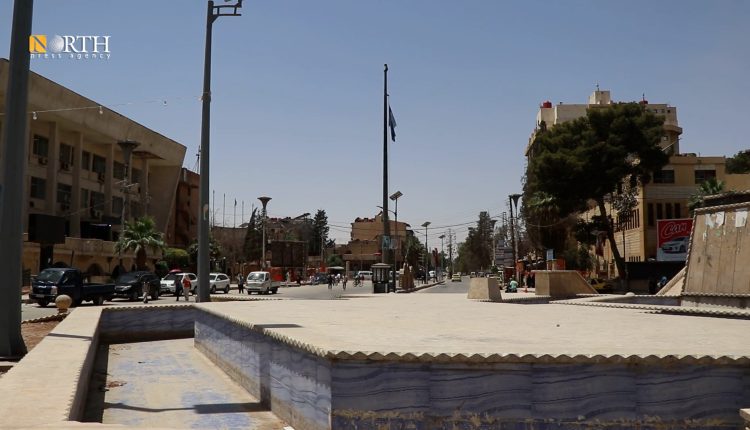By Dilsoz Youssef
HASAKAH, Syria (North Press) – The Islamic State (ISIS) is capitalizing on reduced U.S. military presence in northeastern Syria and the security vacuum in the Syrian desert, left in the wake of the Assad regime’s collapse late 2024, to reorganize its ranks.
The group’s attacks have increased significantly in recent months, raising fears of its resurgence. The U.S. military’s withdrawal from several bases and the downsizing of its footprint in northeast Syria are seen by analysts as key factors weakening anti-ISIS operations.
Threat from the desert
According to Abjar Dawoud, spokesperson for the Syrian Democratic Forces (SDF), the collapse of Syria’s political and military structures has created opportunities for ISIS cells to spread, particularly in the Syrian Desert and along the Syria-Iraq border.
Dawoud told North Press that ISIS is exploiting the desert terrain to move covertly and launch suicide bombings and surprise attacks targeting both military and civilian areas.
“They have expanded across our areas and other parts of Syria seizing weapons and equipment left behind by the former regime as it fled. The group is now reusing these weapons in various ongoing operations across the vast eastern desert region,” he said.
According to the SDF’s official website, the forces have conducted dozens of security operations in recent months against ISIS cells in northeastern Syria, most notably in Deir ez-Zor, where ISIS activity has been on the rise. The latest such attack occurred on June 17, when gunmen on a motorcycle shot at a vehicle belonging to the Civil Council of Deir ez-Zor in the town of Muheimida, killing one civilian.
The Syrian Observatory for Human Rights (SOHR) reported that ISIS carried out 32 operations in SDF-controlled areas during May alone, resulting in the deaths of five SDF fighters, three ISIS militants, and one injury.
The Observatory warns that the surge in ISIS attacks highlights the group’s ability to exploit security gaps and reassert itself in unstable regions, aiming to instill fear and disrupt stability.
Persistent goal
The SDF spokesperson warned that ISIS continues to attempt prison breaks, recruit children in camps for use in suicide or armed attacks, and re-establish itself as an organized force seeking territorial control in Syria.
Dawoud said that these attacks are not random, emphasizing that they are often carefully planned. Several plots have been uncovered, targeting prisons, camps, and other sensitive locations.
He noted that ISIS aims to activate sleeper cells and recruit new members, although estimates suggest their numbers remain in the dozens.
Despite repeated calls from the United Nations for countries to repatriate their nationals from camps and detention centers, the issue of foreign ISIS fighters remains unresolved—fueling concerns about regional security.
Troubling international silence
Aziz Ahmo, a senior member of the Kurdish Leftist Party in Syria, said the regime’s fall has created a sweeping security void, one that terrorist groups are exploiting to reposition themselves.
Ahmo warned that the lack of an international response is aiding the resurgence of ISIS. He pointed out that the Autonomous Administration of North and East Syria (AANES) and the SDF have called for international courts to try ISIS members, but there’s been no real progress.
He added that this silence is deeply concerning. Syrians are exhausted by conflict and bloodshed. Everyone hopes for an end to hostilities and the elimination of terrorist cells in the region, he added.
Ahmo stressed that the ultimate goal of ISIS’s renewed activity is to destabilize the region and derail political efforts to resolve Syria’s long-standing crisis in a democratic and peaceful framework.
In the absence of a comprehensive political solution and amid waning international support, ISIS’s resurgence in Syria poses a growing threat—not just through its daily attacks, but through its exploitation of geographic and security vacuums.
As long as the international community continues to ignore the issues in prisons and camps, the risk of the group’s expansion remains, unless serious efforts are made to address the root causes of the crisis and reinforce coordinated security and diplomatic efforts to prevent a renewed wave of terrorism in the Syrian Desert.

